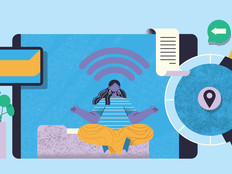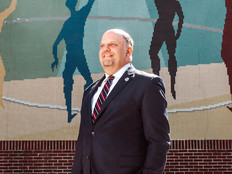The Secret to Building a Strong Unified Communications System
In 2009, Los Gatos–Saratoga Joint Union High School District's unified communications deployment was going extremely well — until the police started showing up regularly at one of its two schools.
It's not that emergencies were being called in or that something illegal was occurring. Rather, a minor (but surprisingly common) glitch in the setup of the Northern California district's intercampus dialing plan, a component of its larger UC system, resulted in numerous unintended outbound calls to the local emergency dispatcher.
In 2008, district officials began deploying a Cisco UC solution to replace a decades-old analog telephone system and to equip teachers and administrators with Cisco IP and smartphones, as well as communication functions such as integrated voicemail, intercom and group paging. The product suite it adopted included Cisco Unified Communications Manager Express, Unity Express, unified IP phones, integrated services routers, Catalyst switches and controllers, and Aironet wireless access points.
The implementation was essentially trouble-free, with one exception. The IT department had to provide the district office and each high school with an identifying two-digit code — a necessary task that would make it much simpler for any employee to dial fellow district staff.
For example, to call Manager of Information Systems Julie Grenier, an employee needed to dial only the two-digit code for the district office building and then her extension, rather than the traditional seven-digit main number and three-digit extension.
Unfortunately, this minor step in the process inadvertently proved the law of unintended consequences. A consultant working on the project had advised Grenier and the IT team to rely on the numbers 10 through 12 to identify the three facilities, which meant that one of the high schools was assigned 11 as its code.
"Folks here culturally were used to dialing a 9 first when they wanted to talk to someone at another campus," Grenier explains. "So without thinking, they would dial 9-1-1 whenever they called someone at this particular high school. Shortly thereafter, the police would be at the front door."
Redoing the district's dialing plan was the only way to solve the problem for good, but it required "a lot of work and a lot of retraining," Grenier continues, noting that she's since learned of other schools that have unwittingly gone with the 11 identifier.
She laughs about it now, but it's a cautionary tale for all schools to heed. "It's the little things that you don't think about when you're implementing this type of system," Grenier warns, "like how you're going to use it on a daily basis or hook up to the wireless. If you don't think everything through carefully, you could end up creating extra work for yourself and headaches for everyone else."
Thinking Ahead
Although the actual technical implementation of a UC system is relatively simple, it can become complicated and even thrown off when softer issues (planning, user acceptance and training, for example) aren't successfully addressed, says David Stein, principal of Stein Technology Consulting Group and a specialist in UC deployments.
"Even though a lot of this is plug-and-play, there's still complexity involved in integrating UC into the organization's process and culture," he explains. "So you need to do that legwork up front and spend more time than you think might be necessary on planning."
District officials who have successfully implemented UC agree. Allen Behnke, director of safety, security and telecommunications for Green Bay Area Public Schools in Wisconsin, supervised the rollout of a ShoreTel UC solution across 36 schools and four other district locations in summer 2010.
Despite being pressed for time, Behnke and his team made a point of testing several solutions, visiting several schools to experience UC in a real-world setting, and devoting extra effort to mapping out the overall dialing plan. They ultimately deployed ShoreTel's IP phones, voice switches, converged conferencing bridge and emergency notification application.
Configuring the dialing plan was especially challenging, Behnke admits, but he and his team devised a unique solution that addresses a commonly cited problem in internal phone systems: the need for users to look up and locate individual extensions. They did it by identifying the most common roles at each school and assigning each a standard extension. For example, the main office at each school can be reached using extension 800, the principal is at extension 801, and the library is extension 803.
"If I want to get [in touch with] the principal at a certain school, all I have to do is know the two-digit code for the school and then I just dial 801," Behnke explains. "That has worked out extremely well for us because everyone was able to memorize those standard extensions pretty quickly. Then, all you have to do is look up the code. It's instinctive. It doesn't require a lot of time and thought."
Comfort Zone
UC adopters also believe user acceptance, awareness and training must be prioritized. "You've got to really [explain it to] the people who are going to be using it," says Chuck Jones, chief of technology for the Jackson–Madison County School System in Tennessee.
In 2010, Jones implemented a Microsoft UC solution at all 27 schools, the district office and a transportation facility. He chose the system (which features Microsoft Lync Server 2010, Microsoft Exchange Unified Messaging and USB headsets) because it was all-encompassing and less expensive. "We were already a Microsoft shop, and this was kind of the next tier up. So it wasn't a significant cost to us, from a licensing point of view, to go with that system versus moving to something else."
Still, having the benefit of a largely familiar application family didn't diminish the daunting hurdle of user resistance, Jones says, noting that he and his team relied on strong measures of compassion and creativity when they approached users and sought their buy-in. "We have secretaries who were very comfortable with the traditional phone system, and when they found out that they had to answer calls on their computer, it freaked them out a bit. So you've got to be sensitive to that and really talk up the benefits versus simply coming in and saying, 'This is the way it's going to be.' "
Training, in particular, must be an ongoing initiative rather than a one-shot deal, Jones continues. Despite their initial training, many Jackson–Madison County teachers aren't using the UC system as expected, he says, so he's conducting one-on-one training when necessary to get everyone on the same page.
Los Gatos–Saratoga's Grenier also has found that teachers and staff can be timid about using a UC system's more complex functions, so she, too, is being proactive in developing ongoing training strategies. "Everyone knows how to make a call and check their voicemail," she says, "but I'll bet 75 percent can't do a conference call. We gave them a four-page manual to read, but until they need a particular feature, they're not going to figure out how to use it on their own." She's hoping the "system tips" e-mails that she's sending to teachers, for example, will help address the knowledge gaps that may still exist.
Stein, of Stein Technology, advocates a creative approach to the issue. In addition to basic training for most users, he suggests teaching the most tech-savvy or enthusiastic users the UC system's advanced features and having them share that knowledge with their colleagues. He also suggests establishing a help desk to track frequently asked questions for use in future training.
"It's always a good idea to see what people are asking questions about and struggling with, and then target additional training based on that," Stein says. "But it's critical that schools go above and beyond on this, because training is absolutely the make-or-break issue of your system."
@CDWG.com
To see the complete results of the CDW•G 2011 Unified Communications Tracking Poll, visit CDWG.com/uctrackingpoll. Learn more about CDW•G's UC capabilities and offerings at CDWG.com/content/solutions/unified-communications.
All Together Now
Schools increasingly are turning to unified communications solutions to boost productivity, streamline operations and save money.
Boarding the Bus (or Kicking the Tires)
Since 2010, when the CDW•G 2011 Unified Communications Tracking Poll began surveying K–12 respondents, more schools and districts have moved out of the assessing and planning phases of UC adoption and into the implementing or fully implemented phase.

Unified Cloud
71% of K–12 respondents are using cloud platforms to evaluate or deploy UC solutions:
- 4% have fully deployed using a cloud model
- 21% are currently deploying
- 46% are evaluating
Feature Rich
K–12 IT professionals rank the following as UC's key features:
- Access to work e-mail and voicemail via smartphones
- Ability to send broadcast messages via e-mail and phone
- Ability to receive voicemail messages via e-mail






